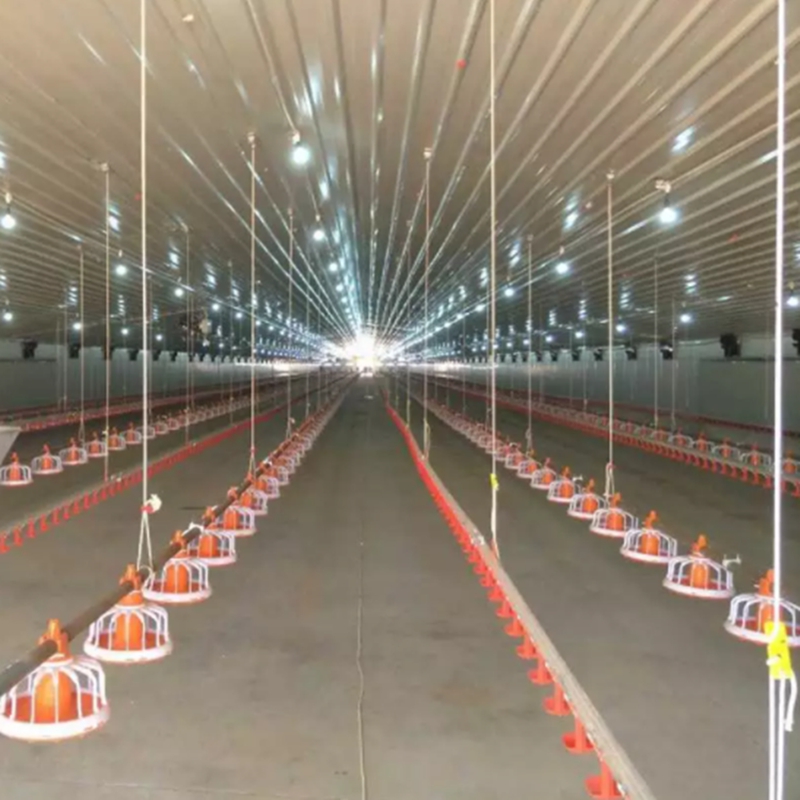breeding cages for rabbits
Nov . 11, 2024 11:26 Back to list
breeding cages for rabbits
Breeding Cages for Rabbits A Comprehensive Guide
When it comes to breeding rabbits, finding the right environment is crucial for the health and well-being of both the rabbits and the breeder. One of the most vital components of successful rabbit breeding is the breeding cage. This article will explore the requirements, designs, and considerations for breeding cages to ensure optimal conditions for rabbits.
Importance of Breeding Cages
Breeding cages play a significant role in the reproductive success and overall welfare of rabbits. These cages provide a safe and controlled environment for mating, birthing, and weaning young rabbits. Optimal cage conditions can prevent stress, reduce aggression, and promote healthy breeding habits. Furthermore, a well-designed breeding cage can ease the care and management of rabbits, making it easier for breeders to monitor their animals and maintain cleanliness.
Ideal Cage Dimensions
When designing a breeding cage, size is an essential factor. The minimum dimensions for a breeding cage should allow enough space for the rabbits to move around comfortably. A good standard for a breeding cage is approximately 3 feet long, 2 feet wide, and 2 feet high. For larger breeds, consider larger dimensions to accommodate their size.
Each cage should have enough room for the doe (female rabbit) to lie down without cramping and for the buck (male rabbit) to engage in mating behavior. Additionally, the cage should have a separate area for nesting, where the doe can give birth and care for her young. A nesting box should be added to the cage to provide a safe and cozy spot for the doe to deliver and nurse her kits (baby rabbits).
Material and Design
The materials used for breeding cages are also critical to their function. The most common materials include galvanized steel, wire mesh, and wood. While wire cages promote ventilation and allow for easy cleaning, they can cause discomfort if not designed with enough bedding or hiding spots. Solid floors with a layer of bedding (like hay or straw) can help ensure the rabbits' comfort and health.
breeding cages for rabbits

Designing a breeding cage with appropriate ventilation is another consideration. Proper airflow helps regulate temperature and maintains a pleasant living environment. Additionally, each cage should be equipped with food and water containers that are easy to access and clean. Automatic watering systems can also be beneficial to ensure rabbits have constant access to fresh water.
Hygiene and Maintenance
Maintaining cleanliness in breeding cages is essential for preventing disease and promoting the health of the rabbits. Regular cleaning should be conducted to remove waste, uneaten food, and other debris. This includes changing bedding material at least once a week and disinfecting surfaces to eliminate any potential health risks.
In addition to regular cleaning, breeders should closely monitor the health of each rabbit. Signs of illness, such as lethargy, loss of appetite, or abnormal feces, should be addressed promptly. Regular veterinary check-ups can also help ensure the overall health of the breeding stock.
The Breeding Process
When introducing a doe and a buck for breeding, a separate breeding cage may be beneficial. This temporary setup allows for close observation and reduces the stress of introducing a new partner into the doe's living space. The buck can be placed with the doe for a few hours, and if successful, the doe will display signs of acceptance by allowing the buck to mate.
After successful breeding, it's important to provide the doe with a nurturing environment where she can feel safe and secure during her pregnancy. A proper nesting area will help her prepare for giving birth and caring for her young.
Conclusion
Creating the right breeding environment for rabbits is crucial for successful breeding practices. A well-designed breeding cage meeting the rabbits' spatial, comfort, hygiene, and health needs can significantly enhance the quality of breeding operations. By investing time and resources into creating optimal breeding cages, breeders will ensure the health and happiness of their rabbits, leading to fruitful and responsible breeding endeavors. Whether you're a hobby breeder or a commercial operation, prioritizing the needs of your rabbits will result in a more successful and enjoyable breeding experience.
-
Hot Sale 24 & 18 Door Rabbit Cages - Premium Breeding Solutions
NewsJul.25,2025
-
Automatic Feeding Line System Pan Feeder Nipple Drinker - Anping County Yize Metal Products Co., Ltd.
NewsJul.21,2025
-
Automatic Feeding Line System Pan Feeder Nipple Drinker - Anping County Yize Metal Products Co., Ltd.
NewsJul.21,2025
-
Automatic Feeding Line System - Anping Yize | Precision & Nipple
NewsJul.21,2025
-
Automatic Feeding Line System - Anping Yize | Precision & Nipple
NewsJul.21,2025
-
Automatic Feeding Line System-Anping County Yize Metal Products Co., Ltd.|Efficient Feed Distribution&Customized Animal Farming Solutions
NewsJul.21,2025






